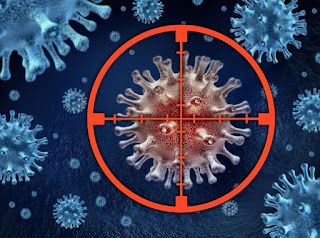Types of Radiation Therapy for Mesothelioma Patients
Radiation therapy is the application of ionizing radiation to destroy tumor cells. When ionizing radiation moves through cells, the radiation strikes some of the molecules, changing them. These molecules become ions and free radicals, which are toxic to living cells. The cells in the treated area then break apart, die, or become dysfunctional. Ideally, the ionizing radiation is directed toward tumor cells rather than healthy cells.
During radiation therapy, a team of specialists including a radiation oncologist, medical physicists, and other healthcare providers will create a treatment plan and conduct radiation therapy. The team will carefully review x-rays, CT scans, and MRI studies to view the mesothelioma as it is situated next to healthy tissue. These radiological images will be used to make precise measurements, and the team will identify the best dose of radiation for the given patient.
Several issues are considered during radiation therapy. The medical professionals will attempt to avoid directing the beam at healthy tissues that surround the tumor, but will calculate a radiation dose that should be toxic to the entire diseased area. Since mesothelioma rarely forms a discrete tumor and grows near many sensitive areas (e.g., spinal cord, heart, esophagus, liver, and the opposite lung), every effort is made to direct the beam at the cancer cells and limit damage to healthy tissues. Specialized radiation delivery techniques have been developed to more precisely target mesothelioma cells.
Read more: How Does Radiation Therapy Work for Mesothelioma?
Read more: How Does Radiation Therapy Work for Mesothelioma?
External Beam Radiation
The traditional method of radiation therapy for mesothelioma is external beam radiation therapy. In external beam radiation therapy, a radiation source outside the patient’s body is pointed at the tumor. Positioning of the radiation delivery device is critical. During the first treatment, a small tattooed dot (the size of a freckle) or semi-permanent ink dots may be applied to the skin to mark a location for the current and subsequent radiation treatments. A precise dose of radiation is delivered by a radiation beam to the tumor. Since the beam is outside of the body, healthy tissue such as skin, muscle, and bone may receive some radiation as well.
Because the positioning and radiation dose must be precise, the preparation for a radiation therapy treatment takes longer than the radiation exposure itself. The actual exposure to radiation takes a few minutes, but the positioning and preparation may take 20 minutes or more. The exposure to radiation is painless, much like having an X-ray or CT scan is painless. Standard external beam radiation therapy is administered five days a week over the course of several weeks.
3D-CRT
3D-CRT stands for three-dimensional conformal radiation therapy. 3D-CRT is a form of external radiation that matches the radiation beam to the shape of the tumor. In traditional external beam radiation therapy, treatment is provided based on a two-dimensional representation of the body. In 3D-CRT, specialized software is used to convert two-dimensional images into a three-dimensional representation of the body and the tumor. Therefore, the radiation treatment specialists can direct the radiation to the tumor in three-dimensional space. The result of this process is that more radiation is delivered to the tumor and less radiation is delivered to healthy tissue.
Like traditional external beam radiation, the 3D-CRT treatment is painless. Since targeting in 3D-CRT is more precise than in the traditional approach, higher doses of radiation can be used. Thus, the cancer-killing potential of the treatment is higher.
IMRT
IMRT stands for Intensity Modulated Radiation Therapy. Like 3D-CRT, IMRT delivers radiation precisely to areas with tumors while mostly sparing surrounding tissue. Unlike 3D-CRT, IMRT delivers different intensities of radiation to the tumor. For example, a high-intensity beam can be directed at areas of large, solid tumor mass while lower intensity energy can be directed at thinner or smaller collections of cancer cells. Because of this enhanced precision, very high doses of ionizing radiation can be used with IMRT.
IMRT may be more effective than external beam radiation therapy and may cause fewer side effects. When IMRT is compared to 3D-CRT, however, the differences in effectiveness are less impressive. IMRT is able to deliver higher amounts of radiation to the mesothelioma, but it still puts healthy organs at risk.
Recently, enhancements have been made to IMRT that may make it even safer. When IMRT is delivered with a technology called helical tomotherapy, high-dose radiation can be delivered more precisely to cancer cells and relatively little strikes healthy tissue. Just as computed tomography (CT) takes X-ray images in “slices,” helical tomotherapy delivers radiation therapy in horizontal “slices” of the body. The intensity of the beam changes with the size of the tumor in each slice. The result is an even higher level of precision than typical IMRT treatments.
Intraoperative Radiation
Intraoperative radiation is the application of ionizing radiation to tumor cells during the course of surgery. The theoretical advantage of intraoperative radiation is that the beam of radiation can be directed on the tumor itself rather than first traveling through healthy tissue. Another possible advantage of intraoperative radiation is the radiation will kill all mesothelioma cells within the chest cavity since, during surgery, the treating physician can see the tumor directly.
Unfortunately, intraoperative radiation has not shown much success. One research group deemed the treatment “prohibitively toxic” and reported serious complications when intraoperative radiation was combined with extrapleural pneumonectomy. It is not known whether intraoperative radiation is beneficial when combined with pleurectomy and decortication, however.
Benefits of Radiation Therapy
Your specific diagnosis will determine which type of radiation therapy will be most beneficial in terms of improving prognosis. It’s important that you refer to a mesothelioma specialist in order to determine if the benefits will outweigh the risks under your specific circumstances. If your doctor recommends radiation therapy as part of your mesothelioma treatment plan, it means they believe the benefits outweigh the possible side effects.
Sources:1. Buduhan G, Menon S, Aye R, Louie B, Mehta V, Vallières E. Trimodality Therapy for Malignant Pleural Mesothelioma. Ann Thorac Surg. 2009.
2. Rosenzweig KE, Fox JL, Zelefsky MJ, Raben A, Harrison LB, Rusch VW. A pilot trial of high-dose-rate intraoperative radiation therapy for malignant pleural mesothelioma. Brachytherapy. 2005.
3. Lee TT, Everett DL, Shu HK, et al. Radical pleurectomy/decortication and intraoperative radiotherapy followed by conformal radiation with or without chemotherapy for malignant pleural mesothelioma. J Thorac Cardiovasc Surg. Dec 2002.
4. https://www.maacenter.org/treatment/radiation/types-of-radiation-therapy/












